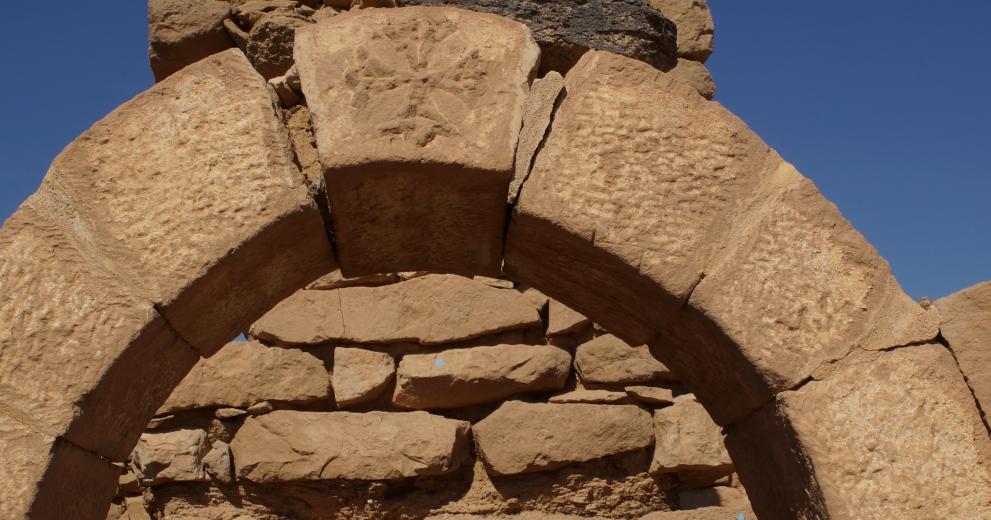The monastery of Ghazali is situated in the lower part of the Wadi Abu Dom, opposite Jebel Barkal. It dates from the 10th century AD, when Christianity was at its height, and is a good example of Nubian monasticism. Read more ...

600 to 1500 AD
Medieval period
It is a little known fact that the Middle Nile region experienced the Christian Middle Ages in much the same way as Europe. The medieval millennium, which lasted from about 600 AD to 1500 AD, was one of the most important periods in the long history of the region.
Since the mid 6th century AD, Byzantine missionaries travelled up the Nile, evangelising the local elites. They championed rivalling denominations of the Eastern Orthodox faith which they spread in a race against each other. In the years that followed, three Christian kingdoms emerged along the Middle Nile:
Nobadia, with the capital Faras, in Lower Nubia
Makuria, with the capital Old Dongola, spreading from the Second Cataract up to the Great Nile Bend
Alodia, or Alwa, south of Makuria, with its capital Soba on the Blue Nile just south of present-day Khartoum.
All three states are connected with the Nubians, a people who continue to inhabit northermost Sudan. Opinions differ as to when and from where they migrated to the Nile valley. As the textual record of all three medieval kingdoms is partly in a Nubian language, Nubian communities must have been present, and constituted the ruling elite, by this time.
While the Kingdom of Nobadia did not survive as a political entity for long, being absorbed by Makuria before 700 AD, Makuria and Alodia developed into veritable political powers. Together with Axum in Ethiopia they formed a solid band of Christian states even though they were cut off from the rest of the Christian world by the immense Islamic empire. Makuria was the only power which successfully fought off the Arab troops, who overran all of North Africa and Spain, spreading Islam after the death of the prophet Mohamed in the 7th century AD.
Secular and religious Nubian elites shaped a rich Christian culture in the Middle Nile valley. A minimum of 13 bishoprics are known from textual, and partly archaeological, sources. There also was a strong monastic tradition. Faras, Dongola and Soba comprised royal palaces and magnificent churches. The wall paintings which adorned the major cathedrals as well as minor churches even in remote areas are some of the most remarkable artistic productions of this period. Iconography, church architecture and liturgy were oriented on Byzantine models, but took a more independent path as time went on. This trajectory is also reflected in the textual record, which comprises documents in Greek, Coptic and Old Nubian, the use of which increased through time.
Relations with Muslim Egypt were regulated by the baqt, a bilaterial treaty which was signed soon after the Arab troops had conquered the Lower Nile valley in 641 AD. Despite repeated violations from both sides, the baqt lasted almost seven hundred years – making it one of the longest-lived treaties in history.
Islam made gradual inroads into Nubia through trade and migrations from the Arab Peninsula. Egypt's Mamluk rulers repeatedly attacked Makuria and gained influence over the ruling family. In the 14th century, the unity of the kingdom broke down. There is some evidence that part of the Makurian court survived into the 15th century after having fled from Old Dongola. The southern Kingdom of Alodia succumbed to the attacks of the Funj Sultanate after they had destroyed the capital Soba around 1500.




